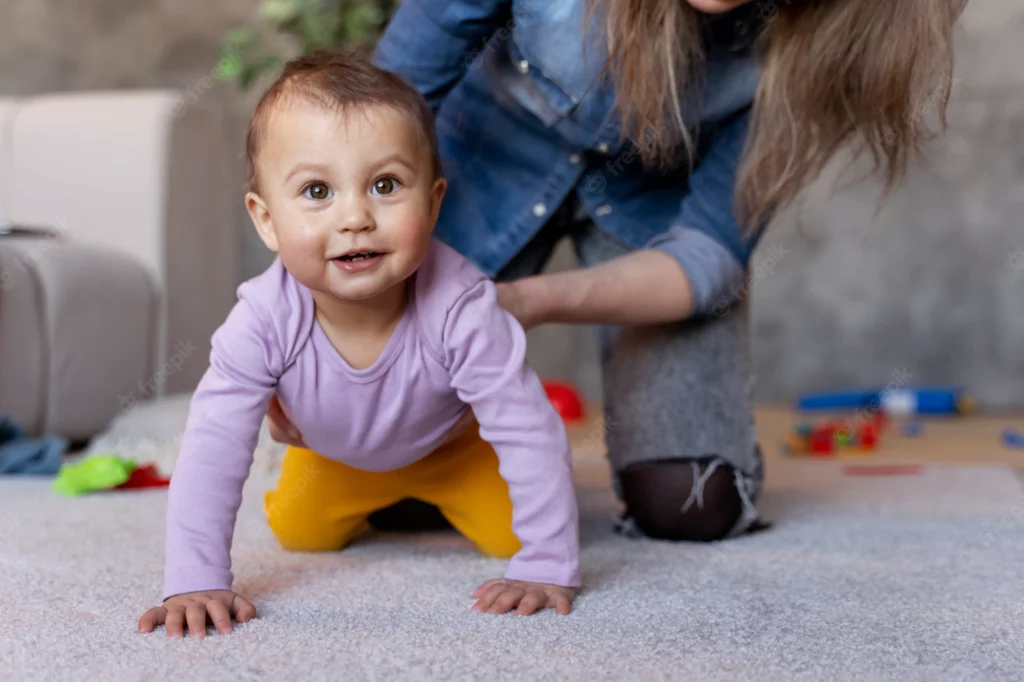
Crawling is the first skill that gives the baby a taste of independence. It plays an important role in the baby’s development for many reasons. It refines a lot more than just motor skills.
1. Crawling influences visual-spatial skills and socio-emotional development
When an infant crawls, he visually determines where he wants to go and physically moves in that direction. The baby can set goals, succeed or fail in reaching these goals, and experience intense positive and negative emotions.
Experiences of crawling and falling develop a fear of heights in babies. Goal achievements and failures impact emotional development in babies creating independence and confidence.
2. Crawling forms a major link between physical and neurological development

During crawling, both hemispheres of the brain are exchanging information at the speed of light.
This develops and enhances essential life skills that are necessary for performing daily tasks such as walking, running, driving, and taking lecture notes during class, etc.
3. Crawling trains the eye muscles and improves binocular vision
Efficient binocular vision is required for reading and writing skills. When crawling, infants set their sights on a goal and use their distance vision to look ahead at the goal and then back at their hands. This trains the eye muscles to adjust focus and improve binocular vision.
4. Crawling develops motor coordination and balance

Crawling is an important milestone in developing motor coordination and balance. To crawl successfully, the baby has to master control over his movements as well as over his limbs.
First, the right arm, then the left leg, followed by the left arm and the right leg, and so on. For such cross-lateral integration, the left and right sides of the body must work in coordination.
The repetitious movement of crawling helps stimulate and organize neurons in the brain. This allows the brain to control cognitive processes such as comprehension, concentration, and memory.
5. Crawling is important for spinal development and its alignment

Growing evidence suggests that crawling increases the physical strength of the baby as it engages the whole body. Crawling uses both arms and legs against gravity to lift the trunk off of the floor and to move about.
This motion exercises and strengthens the muscles in the trunk, shoulders, arms, legs, and hands. The pressure of the torso on the extended arms in the crawling position helps develop the arches in the hands thus influencing fine motor skill development.
This is also believed to help in forming the important curves of the spine, which are vital for future spinal functions.
Conclusion

Though it is obvious that crawling influences many aspects of the infant’s developmental process, there are many babies who completely skip this milestone.
There is no definite proof that this has affected their future lives. The significance of crawling in infant development is still a debated matter among medical researchers.
But, since crawling is believed to be such a critical developmental milestone in an infant’s life, it is safer to encourage the baby to crawl, at least for a brief period of time.
